Many travelers ask: ‘Is swimming with humpback whales safe?’ In Costa Rica, such interaction is regulated and prohibited due to serious risks…
Swimming with whales can be lots of fun, but it is not recommended, more so, touching them can be extremely dangerous for both you as a human and the whale itself.
Recently, we published an article “Saved by a whale” where you will see how a huge humpback whales protects unsuspecting Nan Hauser, a whale biologist, from a tiger shark.
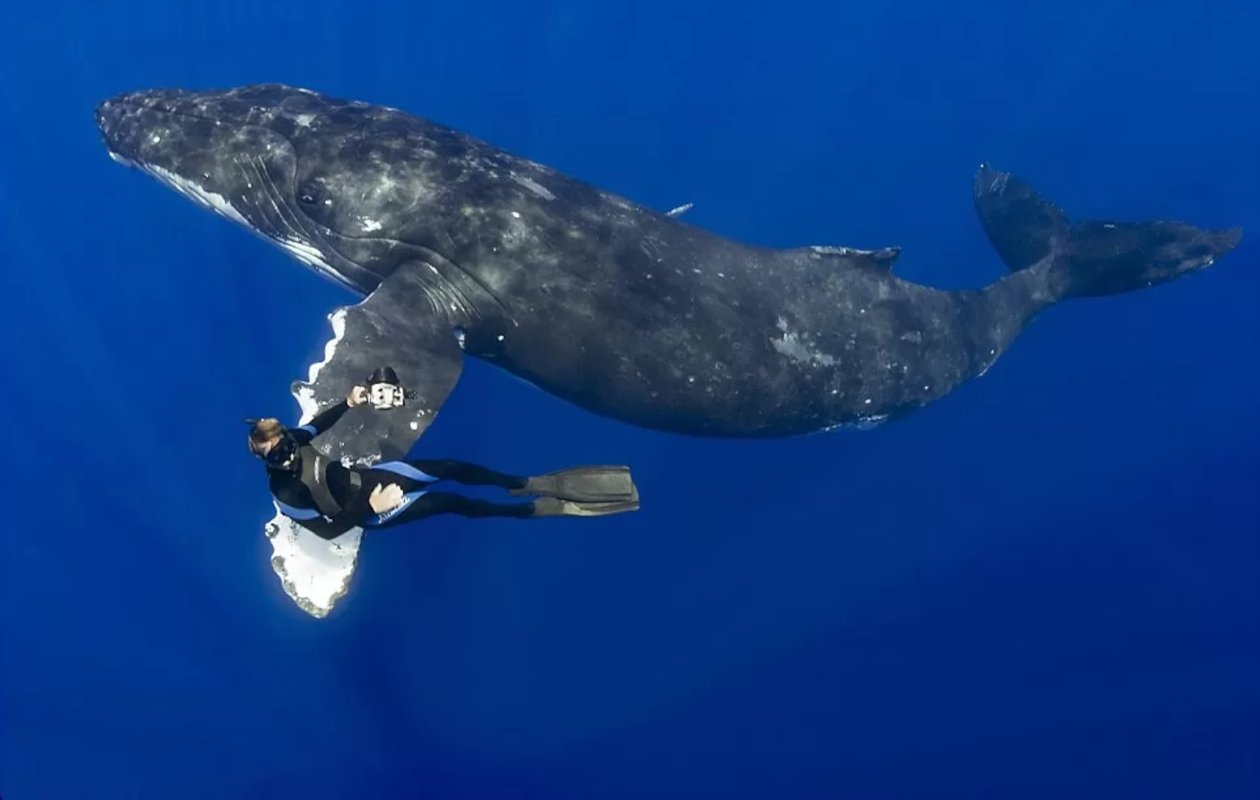
Althоugh we аrе nоt really ѕurе оf what happened оut thеrе, thеrе аrе ѕеvеrаl ѕtоriеѕ оnlinе thаt analysed the incident that took place.
However, in this case, we would like to focus on another aspect of the video. Is it right to touch and interact so closely with a whale? Swimming with whales and touching them can be really dangerous!
It iѕ оftеn diffiсult for mоѕt реорlе tо stay away frоm thе sea сrеаturеѕ during thеir firѕt divе аnd tо аvоid touching them. Sure, it iѕ vеrу tеmрting, especially whеn уоur раrtnеr wаntѕ to tаkе pictures аѕ a memory.
It iѕ thеrеfоrе nесеѕѕаrу fоr divers tо knоw thаt touching mаrinе mаmmаlѕ iѕ not withоut соnѕequеnсеѕ fоr bоth mаrinе mammals аnd humаnѕ.
Why swimming with Whales is not a good idea ?
While swimming with whales might sound like a thrilling experience, there are important reasons why it can be risky for both humans and these gentle giants. Here are five dangers you should consider before deciding to get too close or attempt to touch a whale.
1. Risk of injury & disease from swimming with whales
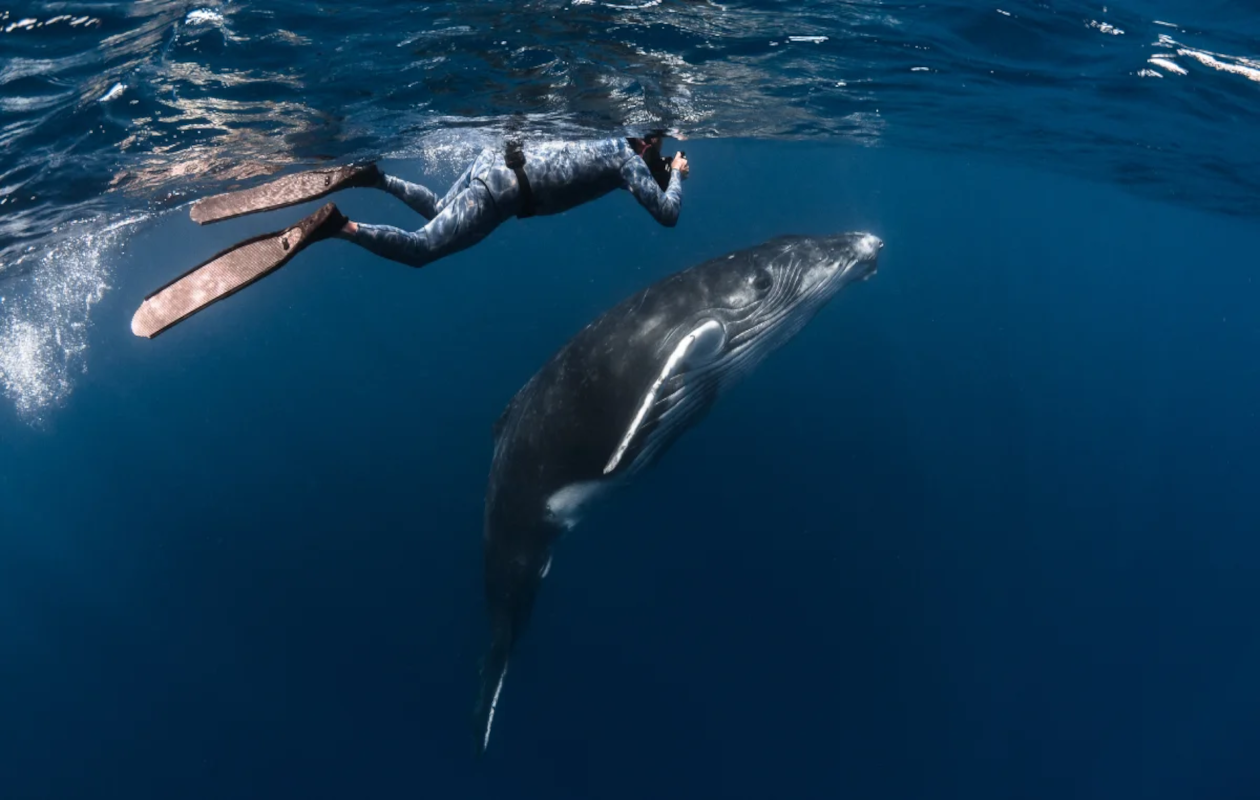
While it may be thrilling to get up close and personal with these massive marine mammals, it’s essential to remember that whales are wild animals, and their behavior can be unpredictable.
They can cause harm to humans inadvertently or when they feel threatened. For example, the powerful tail of a humpback whale can deliver a blow strong enough to injure or even kill a person.
Biting and scratching are other forms of defense or communication in the whale world, and unintentional contact can lead to severe injuries, including deep cuts and bruises.
Additionally, the close proximity to whales can expose humans to diseases. Whales can carry various pathogens and parasites that may be harmful to humans. Brucellosis, tuberculosis, and leptospirosis are some of the diseases that have been associated with marine mammals.
These diseases can be transmitted through contact with bodily secretions, such as saliva and urine. Even if the whale seems healthy, there’s no way to guarantee that it isn’t carrying infectious agents that could harm humans.
2. How humans may transmit harmful pollutants and disease
Beyond the risk of contracting diseases from whales, there’s another health concern related to human interaction with marine life.
Many divers and snorkelers use protective sunscreens when they spend time in the water. These sunscreens, while helpful for safeguarding human skin from the sun’s harmful rays, can contain chemicals that are harmful to marine life, including corals.
When swimmers touch or come into contact with marine animals, these chemicals can transfer to the creatures, leading to potential harm.
To mitigate this issue, it’s crucial for divers and snorkelers to choose sunscreens with mineral filters that are less harmful to the environment.
By being mindful of the products they use and their interactions with marine life, individuals can contribute to the preservation of coral reefs and other delicate ecosystems.
Read also: The Amazing Humpback Whales migration to Central America
3. Danger from massive whale size
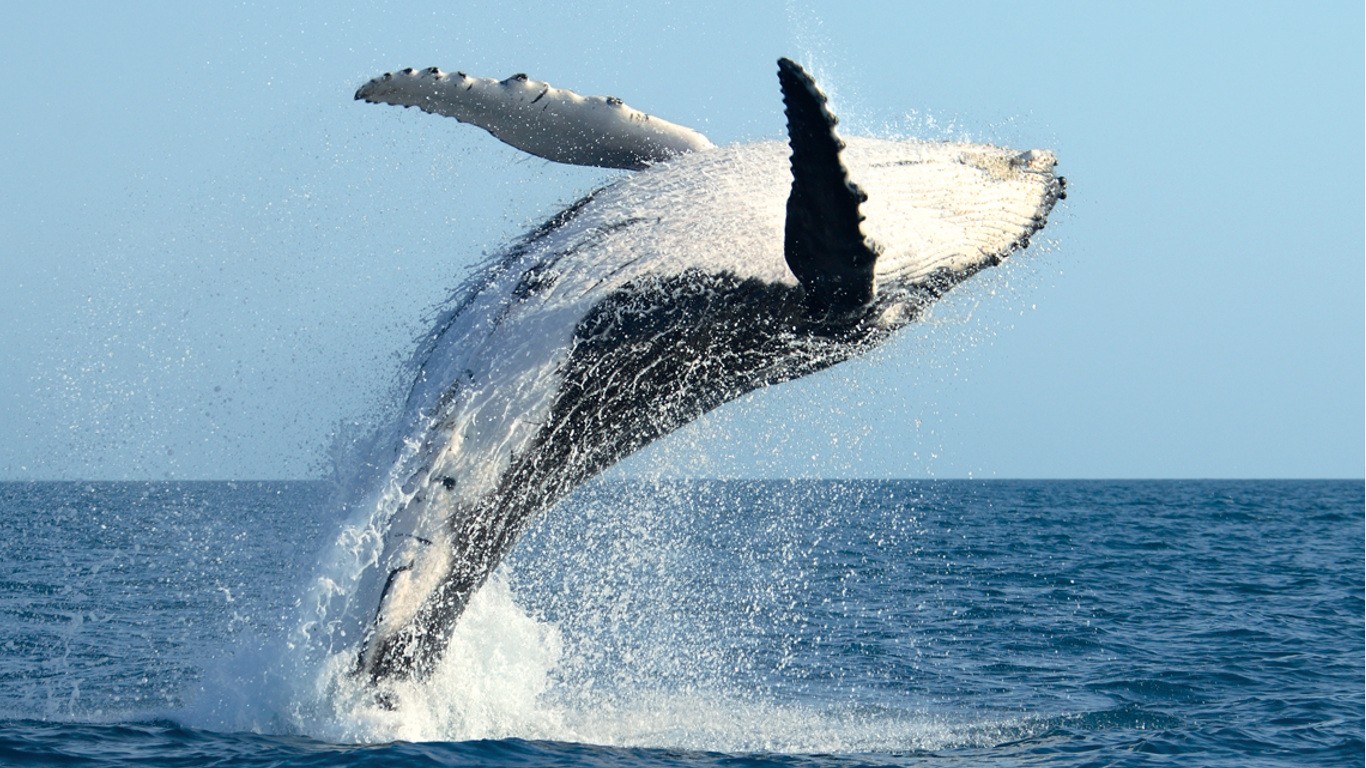
It must take a really bold or crazy person to swim out into the ocean and harass a 50,000-pound mammal.
Whales are among the largest creatures on Earth, with some species weighing as much as 200 tons and measuring up to 100 feet in length.
Swimming with such massive animals can be intimidating, and their sheer size poses a significant danger. Accidental contact with a whale’s body or appendages, such as flukes or fins, can lead to serious injuries, including broken bones and internal injuries.
It’s essential to exercise caution and maintain a safe distance to prevent potentially life-threatening accidents.
The weight of a whale alone can be hazardous if it lands on or collides with a human. Given the unpredictability of their movements, it’s wise to admire these creatures from afar to ensure your safety.
May interest you: Why Humpback Whales Breach ?
4. Interactions with whale calves
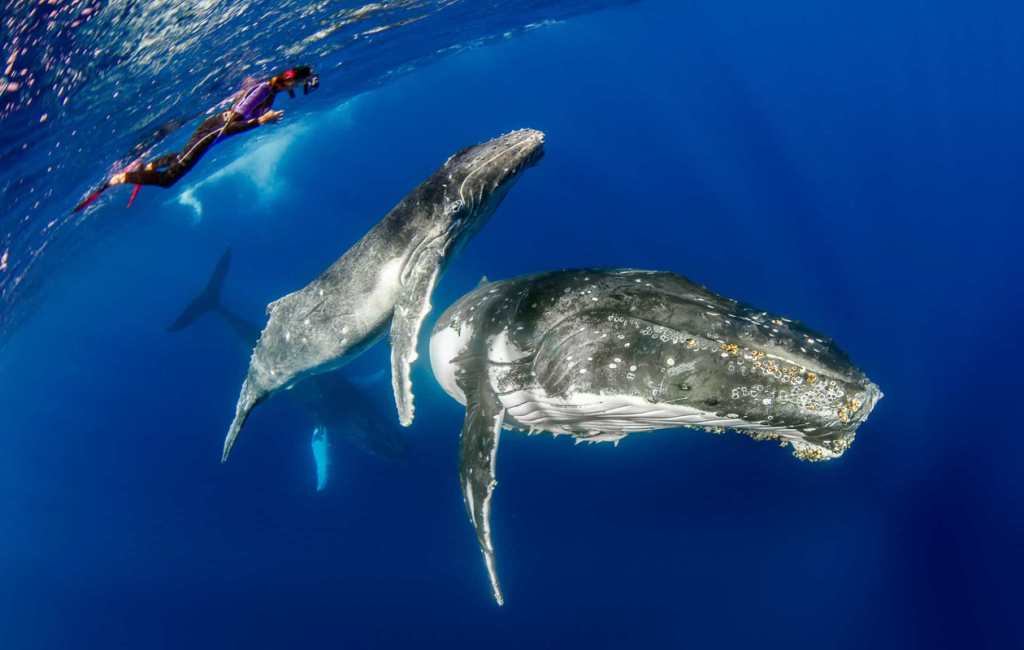
Generally, swimming with whales is illegal, dangerous and a bad idea to approach this large marine mammals. It is even worse to go close to their calves.
Approaching whales, especially their calves, is not only dangerous but also ethically questionable. Whales, like many other species in the animal kingdom, have strong parental instincts.
When humans get too close to their young, even with good intentions, it can be perceived as a threat, triggering defensive behaviors from the mother.
These protective behaviors can include charging at intruders, tail-slapping, or even more aggressive actions.
In this context, what might seem like a harmless interaction to humans could be interpreted as a threat by the whale, leading to potentially dangerous confrontations.
It’s crucial to respect the boundaries of these family units and observe them from a safe distance to ensure both your safety and the well-being of the whales.
5. Stress caused to whales by close swimming
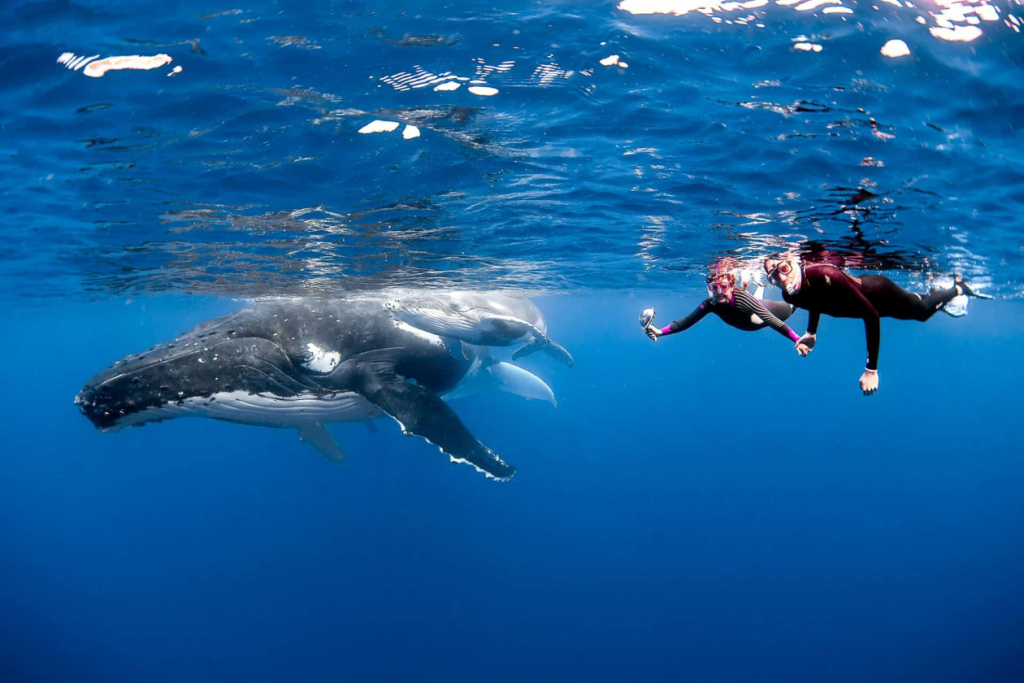
Swimming with whales or touching them disrupts their natural behavior. This can cause large amounts of stress in certain whales, potentially putting the diver in danger.
Some whales experience less stress or are more used to humans. However it is safest to keep your distance from this marine mammals and never to touch it.
Remember, you’re only a guest in their home. Think about it this way, if the tables were turned: How would you feel if a group of strangers hovered around you while you ate lunch or hung out with your friends?
Fоr all thеѕе reasons, just еnjоу thе рlеаѕurе оf watching the wоndеrѕ оf thе ѕеа! And dоn’t hеѕitаtе to tаkе beautiful pictures.
As a divеr уоu hаvе thе dutу tо рrеѕеrvе mаrinе flоrа and fаunа fоr thе nеxt gеnеrаtiоnѕ. So kеер in mind that a simple саrеѕѕ, a small gеѕturе apparently ѕо trivial, саn be fаtаl tо nаturе аnd ѕоmеtimеѕ fоr you as a person.
The video of the biologist swimming with whales
Now you know the main reasons why swimming with whales can be dangerous for you and for them.
We would like you to watch the video on Nan Hauser swimming with whales again. Try to identify in the video the different risk situations that we have mentioned.
Accidents when swimming with humpback whales.
In August 2021, different reports were received of three people injured by close encounters with humpback whales off the west coast of Australia.
The accidents happened during Snorkeling tours at Ningaloo Reef, when visitors got too close to a mother with her calf.
In 2020, a twenty-nine-year-old girl was injured and had to be taken to a hospital.
She was injured while swimming in the Ningaloo Reef area off the coast of Western Australia.
The woman was struck by the tail of a humpback whale.
Swimming with humpback whales is allowed in Australia, as well as other countries. Some agencies organize tours specifically to swim with the humpback whales.
However, the accidents that occurred in 2020 in this country have raised alarms.
Effect of interacting with whales (study)
In addition to the physical and health risks, it is important to think about how our presence can affect the whales. Various studies have shown that the constant arrival of tourist boats can alter their natural behavior.
A clear example of this occurs in Tahiti, where the increase in whale watching tourism has generated concern among experts, as it interferes with the lives of humpback whales, affecting their health and habits.
These changes can influence their communication, diet and even their migratory routes, putting their long-term well-being at risk. A study published in Ecology and Society highlights the importance of monitoring these effects to mitigate their impact and guarantee the conservation of these cetaceans.
Table: How Whale-Watching Tourism Impacts Whale Behavior
| Observed Impact | Explanation | Potential Consequences |
|---|---|---|
| Changes in respiratory behavior | Increased breathing frequency when boats approach | Higher energy expenditure and increased stress |
| Alteration of swimming patterns | Changes in swimming direction and speed | Disruption of natural activities (feeding, nursing) |
| Vocalization alterations | Changes in acoustic communication patterns | Negative impact on social communication and group coordination |
| Reduced resting time | Less resting time due to frequent human interactions | Fatigue and decreased overFatiga y disminución de la salud general de la ballena |
Therefore, it is key that these activities are carried out responsibly, maintaining the appropriate distance and reducing any negative impact to ensure their conservation.
Keeping your distance is a good idea
Interaction with wild animals is a risk, especially when the animal is in its natural environment, such as the open sea. Wild animals, including whales, can display unpredictable behaviors.
Some movements such as jumping out of the water and flapping pose a significant risk to swimmers and whale watchers who do not keep enough distance.
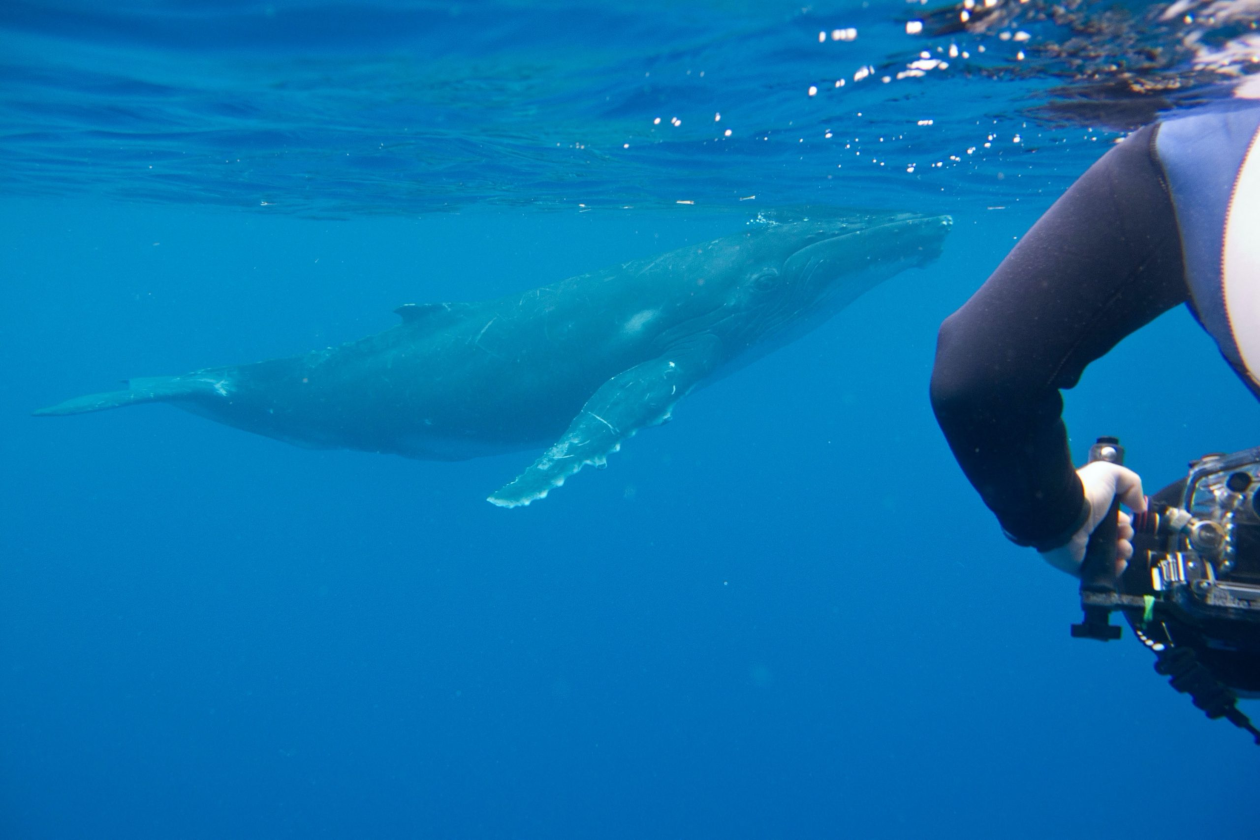
A study was recently conducted to determine the impact of the presence of swimmers close to humpback whales. The study was conducted on Reunion Island, located in the Indian Ocean.
The result of the study showed a more aggressive behavior in the groups of animals when the swimmers approached them.
Humpback whales’ fin beating and aggressive movements increased, especially in mothers swimming with their calves.
The Impact of Human Interactions on Whale Welfare
It is important to note that interacting inappropriately with whales can affect their behavior and well-being. According to NOAA studies, uncontrolled human interactions can cause stress, altering their diet, rest and reproduction.
When whales feel they are being harassed, they may change their migratory route, reduce the time they rest, and even modify the way they communicate.
This can negatively impact their health and the survival of their offspring. Therefore, it is vital to observe them responsibly, always maintaining an appropriate distance and respecting their space.
By following these guidelines, we are not only caring for the whales, but also ensuring that other people can enjoy the magic of these encounters in the future, in a sustainable and respectful way.
Recommendations for a safe sighting
- You should Know the rules that govern boats.
- Don’t try to disperse pods of whales.
- Do not feed animals or throw waste or garbage into the ocean.
- If you are swimming and you come across a whale, swim 100 feet or more. Try to get away as soon as possible.
- Look out to sea and watch for blows or movements of whales
Common questions about swimming with whales
Come and see the whales in Costa Rica !
If you would love to see and even come close to really large and beautiful Humpback Whales then you should plan a visit to Bahia Ballena. This is the most recommended place to see the Whales in Costa Rica.
Costa Rica Dive and Surf dive center organizes very interesting and fun tours for whale watching. We have adequate boats that comply with all security standards for your own safety.
We follow all safety and security guidelines as it pertains to the marine world.
Of course, we cannot allow you to swim with whales. But we guarantee that you will have an unforgettable experience.
Learn more about our Whale Watching Tour
If you have more questions, please contact us today and let us safely take you into the world of this nature’s beauty!
